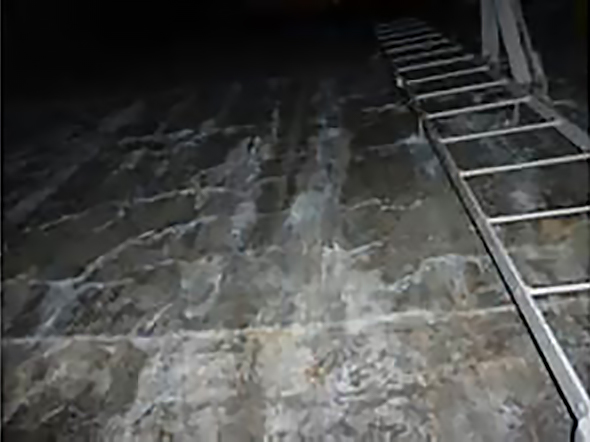The Alkali-Silica Reaction
Infrastructure at the Seabrook Nuclear Power Plant is compromised due to an insidious form of concrete degradation known as the Alkali-Silica Reaction (ASR).
ASR is a progressive and irreversible chemical reaction that happens to concrete in the presence of moisture. The reaction accelerates as it progresses.. ASR micro-cracking exists in 80–85% of Seabrook's structures.
It's also hard to fix. Unlike other forms of concrete degradation, ASR cannot be easily treated or mitigated because the conditions that cause it are either inherent to the cement itself (alkali and reactive silica content) or impossible to avoid (rain and groundwater).
WHY IS CONCRETE DEGRADATION A PROBLEM?
Many people are unaware that concrete is the primary material protecting us from the radiation of nuclear power plants. The containment dome, shielding walls, storage facilities, spent fuel pools, dry cask storage, foundations, floors, and other structures are all made of concrete.
WHAT CAUSES ASR?
ASR happens when water is absorbed by concrete. The components of concrete become reactive in the presence of water and a gel forms which then takes in even more water, expanding and exerting pressure within the concrete, weakening, and eventually resulting in structural failure. ASR leads to critical structural problems and can even force the demolition of an affected structure.
Several factors exacerbate concrete degradation and ASR, including contact with saltwater, changes in temperature, high temperatures, and radioactivity. Every one of these factors is present at Seabrook.
THE HIDDEN PROBLEM OF ASR
ASR happens at the molecular level, so the damage is often at an advanced stage by the time cracks become visible. Because of this, visual inspections are inadequate for determining the extent of damage and weakness within concrete structures. Core sampling, lab analysis, and ultrasound are needed in order to determine the full extent of degradation below the surface.
There is no patch for this kind of degradation and no avoiding the elements. In fact, ASR degradation will only get worse with sea level rise and tidal flooding.



